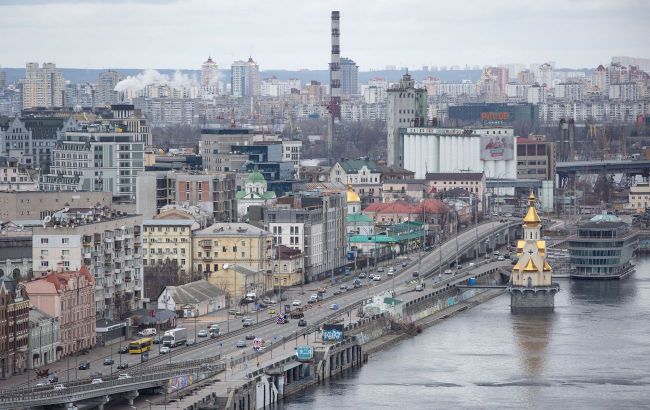From sacred sites to Khrushchyovkas: How Kyiv’s architecture lost its soul
 Panorama of Kyiv (photo: Getty Images)
Panorama of Kyiv (photo: Getty Images)
Kyiv’s development has journeyed from the sacred sites of Kievan Rus to Khrushchyovkas (the typical Soviet panel houses) and modern urbanism. Each era has left its mark on the city, sometimes with painful consequences.
In an interview with RBC-Ukraine, Natalia Pinchuk, a researcher at the Kyiv History Museum, shared insights on how Kyiv was built up and what disaster the Soviet period ultimately led to.
How Kyiv was built
“Kyiv’s development happened in several stages. First of all, there is the story of ancient Kyiv — the Lavra, St. Sophia Cathedral, the Vydubychi Monastery cathedral, remains of the Church of the Tithes, the Zoloti Vorota. Then the Baroque period — 18th-century buildings erected on the Lavra and Sophia grounds, some churches built with funds from Hetman Mazepa. This includes the Kyiv-Mohyla Collegium and the Mazepa building,” the researcher explained.
Another stage was the construction boom at the end of the 19th and beginning of the 20th centuries. During this time, buildings unusual for the then-capital city appeared: banks, stock exchanges, wealthy palaces, museums, theaters, factories, and industrial structures.
"At that time, Kyiv turned into a true European capital, and all this happened against the backdrop of capitalist production," Pinchuk noted.
The central streets began to be paved with cobblestones only at the end of the 19th century. They started with Fundukleivska Street, which is now Bohdan Khmelnytskyi Street. Most of this old cobblestone has been replaced by now, but you can still see authentic sections near the Franko Theater.

Maidan Nezalezhnosti in the early 1900s (photo from public sources)

Modern Maidan Nezalezhnosti (photo: RBC-Ukraine / Vitalii Nosach)
Kyiv’s development during the Soviet period
During the Soviet era, Kyiv underwent enormous changes, both positive and catastrophic.
“The greatest tragedy for Kyiv during the Soviet era was the destruction of churches in the 1930s. About 70 religious buildings were demolished. Most famous are St. Michael’s Golden-Domed Monastery, the Church of the Virgin Pyrohoscha, and the Military St. Nicholas Cathedral,” explained Pinchuk.

In 1937, the communists blew up St. Michael’s Golden-Domed Monastery (photo from open sources)
The construction of the metro was one of the positive changes for Kyiv, according to the researcher.
“The Cold War influenced the specifics of building the subway and actually served us well during the modern war. These first metro stations built in Soviet times — from Vokzalna to Dnipro — were designed to serve as shelters from a nuclear explosion. They were the deepest and had hermetic doors, toilets, and water sources. And in the current war, they became the first refuge for many Kyiv residents,” Pinchuk added.

Photo from the Kyiv metro (photo: RBC-Ukraine / Vitalii Nosach)
The construction of the metro was considered the project of the century, even though many processes were not automated. For example, soil from the Arsenalna station was manually removed bucket by bucket.
“Builders and metro workers were something like heroes. Some even used this for PR. There is a famous photo of Pavlo Tychyna with a jackhammer in the underground next to workers. School excursions were even taken there,” the researcher said.
Another positive change for Kyiv during the Soviet period was the construction of Khrushchyovkas (the typical Soviet panel houses), which allowed people to move out of communal apartments and barracks.

Modern view of Kyiv (photo: RBC-Ukraine / Vitalii Nosach)
Previously, we wrote about why Kyiv’s main gates are called the Golden Gates.

